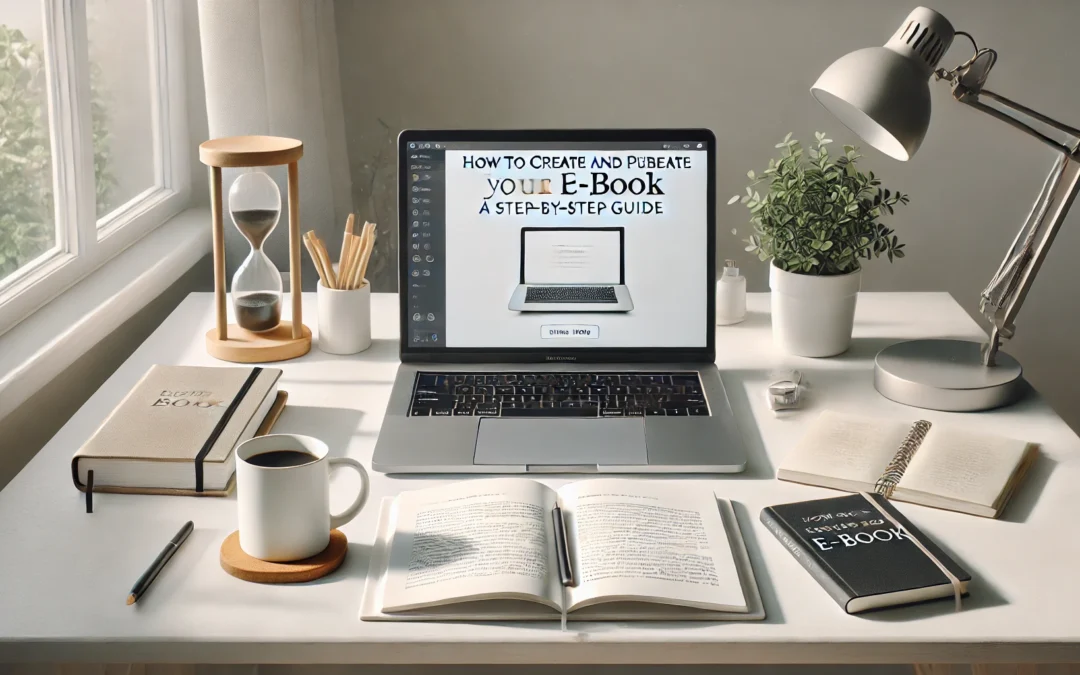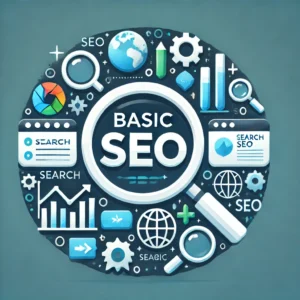Introduction
How to Create and Publish an E-Book: A Step-by-Step Guide. Creating an e-book is one of the most effective ways to share knowledge, build authority, and potentially generate passive income. Whether you’re an entrepreneur, blogger, or author, publishing an e-book opens doors to new audiences and business opportunities. In this guide, we’ll take you through each step of the e-book creation and publishing process—from ideation and writing to formatting, publishing, and promoting your e-book successfully. Let’s get started!
1. Choose Your Topic and Define Your Audience
The foundation of a successful e-book is a topic that’s valuable, relevant, and well-targeted.
- Identify Your Niche: Choose a subject that aligns with your expertise and interests. Topics that solve a specific problem or answer pressing questions are often the most engaging.
- Define Your Audience: Who will benefit from your e-book? Create a clear profile of your ideal reader, including demographics, pain points, and needs.
- Research Your Market: Investigate if similar e-books exist. Look for gaps in existing content or areas where you can add unique insights. Tools like Amazon’s Kindle marketplace and Google Trends can help identify popular topics and unmet needs.
2. Plan and Outline Your Content
A well-organized outline is crucial for creating a cohesive and readable e-book.
- Organize Your Main Ideas: Break down your topic into chapters or sections. Each chapter should address a specific aspect of your topic, building logically from one to the next.
- Create a Chapter-by-Chapter Outline: List the primary points, examples, and subtopics for each chapter. This outline will serve as your roadmap, making the writing process smoother and more efficient.
- Set Clear Goals for Each Chapter: Think about what you want readers to learn or accomplish by the end of each section. These goals will keep your content focused and impactful.
3. Write Your E-Book
With a solid outline in place, it’s time to start writing. Focus on clarity, readability, and value.
- Choose a Writing Style: Match the tone of your e-book with your audience. For educational topics, a conversational tone often works best, while a formal tone may suit more technical subjects.
- Write in Short, Manageable Sections: Avoid overwhelming readers with long paragraphs or dense sections. Break up text with subheadings, lists, and bullet points to improve readability.
- Edit as You Go: Once you’ve finished each chapter, do a quick edit to catch any major issues. This will make the final editing process easier.
4. Edit and Proofread Thoroughly
Editing is essential to ensure that your e-book is polished, clear, and error-free.
- Take a Break Before Editing: Step away from your manuscript for a day or two before starting to edit. This gives you fresh eyes and helps you catch mistakes.
- Self-Edit for Structure and Flow: Look for any inconsistencies, unclear sections, or awkward transitions. Make sure your ideas flow smoothly from one section to the next.
- Consider Hiring a Professional Editor: A professional editor can improve the readability and professionalism of your e-book. You can find freelance editors on platforms like Upwork or Reedsy.
5. Design a Compelling Cover
Your e-book cover is the first thing potential readers will see. A professional, eye-catching cover can make a big difference in sales and downloads.
- Use a Design Tool or Hire a Designer: If you have design skills, you can create a cover using tools like Canva, Adobe InDesign, or Photoshop. Otherwise, consider hiring a designer on platforms like Fiverr or 99designs.
- Follow Design Best Practices: Choose fonts, colors, and imagery that match your topic and genre. Keep the cover simple and readable, especially when viewed as a thumbnail.
- Include a Clear Title and Subtitle: Make sure the title is easy to read and conveys the main benefit or theme of the e-book. A subtitle can clarify what the e-book offers, especially if the title is creative.
6. Format Your E-Book for Multiple Platforms
Proper formatting ensures that your e-book looks professional and is easy to read across different devices.
- Choose an E-Book Format: The two most common formats are ePub and Mobi. ePub is compatible with most devices, while Mobi is optimized for Amazon Kindle.
- Use Formatting Tools: Tools like Scrivener, Vellum (for Mac), or Calibre can simplify the formatting process, making it easy to convert your document into ePub or Mobi.
- Optimize for Readability: Use consistent fonts, proper spacing, and clear chapter breaks. Avoid complicated layouts or images that may not display correctly on smaller screens.
7. Select a Publishing Platform
There are several e-book publishing platforms available, each with different advantages. Choose one (or more) based on your goals and target audience.
- Amazon Kindle Direct Publishing (KDP): Amazon is the largest e-book marketplace, making it an ideal choice for most authors. With KDP, you can self-publish and reach millions of readers worldwide.
- Apple Books: Apple Books is another popular platform, especially if you’re targeting an audience that uses Apple devices.
- Smashwords: This platform distributes e-books to various retailers, including Barnes & Noble, Apple Books, and Kobo, giving your e-book wider distribution.
- Direct Publishing on Your Website: You can also sell your e-book directly from your website, allowing you to retain full control over pricing and profits. Tools like Payhip or Gumroad make it easy to sell digital downloads directly to readers.
8. Set a Pricing Strategy
Pricing your e-book correctly is crucial for maximizing sales and reader engagement.
- Research Competitors’ Pricing: Look at similar e-books to determine a reasonable price range. Popular non-fiction e-books are typically priced between $2.99 and $9.99.
- Consider Your Goals: If your goal is to reach a large audience, a lower price might attract more readers. If you’re targeting a niche market with high value, a higher price may be appropriate.
- Experiment with Pricing: Some platforms, like Amazon, allow you to adjust your price over time. Experiment with different price points to see what resonates best with your audience.
9. Publish Your E-Book
Once your e-book is formatted and priced, you’re ready to publish!
- Follow Platform-Specific Steps: Each platform has a specific process for uploading and publishing e-books. For example, with Amazon KDP, you’ll need to set up a KDP account, upload your files, and provide necessary metadata like the book description and keywords.
- Optimize Your Book Description: Write a compelling description that highlights the main benefits and key takeaways. This is your chance to persuade readers to download or buy your e-book.
- Select Keywords and Categories: Choose keywords and categories that accurately reflect your content, as these will help readers find your e-book in search results.
10. Promote Your E-Book
Publishing your e-book is only the beginning. Effective promotion is essential to reach a wider audience and maximize sales.
- Leverage Social Media: Share your e-book on social platforms like Twitter, Facebook, LinkedIn, and Instagram. Use relevant hashtags and tag influencers who may be interested in sharing your e-book.
- Build an Email List: An email list allows you to reach an audience directly. Share exclusive discounts or bonuses with your subscribers to encourage downloads.
- Use Paid Advertising: Consider using Amazon Ads, Facebook Ads, or Google Ads to reach a wider audience. Paid ads can be particularly effective when launching an e-book.
- Engage with Book Reviewers and Influencers: Reach out to bloggers, book reviewers, and influencers in your niche. Positive reviews and recommendations can significantly boost your e-book’s visibility and credibility.
Conclusion
Creating and publishing an e-book can be a rewarding experience, whether you’re aiming to build your brand, share your expertise, or generate passive income. By following these ten steps—from topic selection and writing to publishing and promotion—you’ll be well on your way to creating a professional, high-quality e-book that attracts and engages readers. Start your journey today, and let your ideas reach a global audience!






